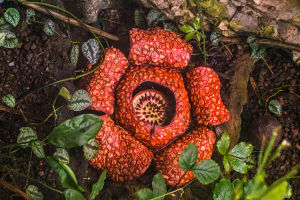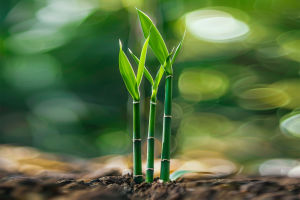Pasque Flower Joy
Have we ever noticed a flower that looks delicate and soft, yet seems to carry a hidden strength all at once? Pasqueflowers, scientifically known as Pulsatilla, are exactly that.
Belonging to the Ranunculaceae family, these perennial herbs are celebrated for their early spring blooms and long-standing medicinal uses. Covered in soft white hairs, the plant almost looks like a small cloud resting on the ground.
Across Europe, North America, and other temperate regions, gardeners and nature enthusiasts alike treasure these delicate blooms for the charm they bring to early spring landscapes.
Leaf Wonders
When we take a closer look, the leaves of Pasqueflowers are fascinating. They grow from the base on long stems and divide into three main segments. Each segment further splits into smaller lobes, creating a deeply cut, delicate appearance.
Sometimes, the leaf tips have tiny notches, giving the foliage a lacy, almost ethereal look. These intricate leaves aren’t just for show—they make it easier for us to identify the plant in the wild and demonstrate how nature balances beauty with function.
Spring Blooms
Early spring is when Pasqueflowers truly shine. Each flower grows alone at the tip of a stem and is wrapped in soft white hairs, contrasting beautifully with deep purple petals. This unique combination of colors and textures makes them instantly eye-catching. We can imagine them swaying gently in the morning breeze, almost like tiny pieces of living art. The flowers bloom before many other plants have awakened, reminding us of the quiet resilience and magic that early spring brings.
Fluffy Fruits
After flowering, Pasqueflowers produce clusters of small fruits that are equally fascinating. Each fruit is topped with a long, white, hairy style, giving the cluster a fluffy, cloud-like appearance. Observing these fruits, we notice how cleverly nature designs them: not only are they meant to survive and reproduce, but they also add a whimsical charm that draws our attention. It’s a reminder that even in survival, beauty can flourish.
Healing Roots
One of the reasons we hold Pasqueflowers in high regard is their roots. These have been used in traditional herbal medicine across various regions for generations. The roots are believed to offer calming and healing benefits, showing that the plant’s value extends far beyond its aesthetic appeal. While we admire the flowers above ground, the roots quietly provide health benefits below, proving that utility and beauty often coexist in nature.
Growing Tips
If we decide to cultivate Pasqueflowers, a few key tips will help them thrive. They prefer well-drained soil and plenty of sunlight during early spring, which encourages strong blooms. Although hardy, the roots should be protected from excessive moisture, as overwatering can lead to problems.
With some attention and care, we can enjoy watching the plants flourish from sprouting buds to full blossoms and finally to their charming fluffy fruits. This process is both rewarding and relaxing, especially for gardeners seeking a connection with nature.
Wildlife Connections
Pasqueflowers don’t just attract humans—they are also appreciated by pollinators. Bees and early spring insects often visit these blooms, helping with pollination and supporting the local ecosystem. By growing Pasqueflowers in our gardens, we create small havens for these helpful creatures. We can witness the quiet interaction between flora and fauna, gaining a deeper appreciation for the cycles of life that surround us.
Why We Love Pasqueflowers
Pasqueflowers aren’t just ordinary blooms—they’re little wonders of spring. From their soft, white-haired leaves to the striking purple flowers and fluffy fruit clusters, every part of the plant tells a story. When we grow or simply admire them, we connect with the beauty of nature and the wisdom of herbal traditions.
Let’s enjoy these magical plants together and share their charm with anyone who visits our gardens. Every Pasqueflower we see reminds us that resilience, beauty, and wonder can thrive even in the tiniest corners of the world.
Pasqueflower/Backsippor (Pulsatilla vulgaris)
Video by Johan Asplund
-
 The Ancient Tree’s SecretHow a living fossil reveals nature’s timeless story and survival magic
The Ancient Tree’s SecretHow a living fossil reveals nature’s timeless story and survival magic -
 The Giant Bloom MysteryDiscover the secrets behind the world's largest and rarest single flower
The Giant Bloom MysteryDiscover the secrets behind the world's largest and rarest single flower -
 Secret to Thriving Plants!Want lush plants? Sunlight, water, and nutrients are key! Learn how to give your plants exactly what they need!
Secret to Thriving Plants!Want lush plants? Sunlight, water, and nutrients are key! Learn how to give your plants exactly what they need!
Contact to : xyjph123@gmail.com
Privacy Agreement
Copyright © boyuanhulian 2020 - 2022. All Right Reserved.
Privacy Agreement
Copyright © boyuanhulian 2020 - 2022. All Right Reserved.